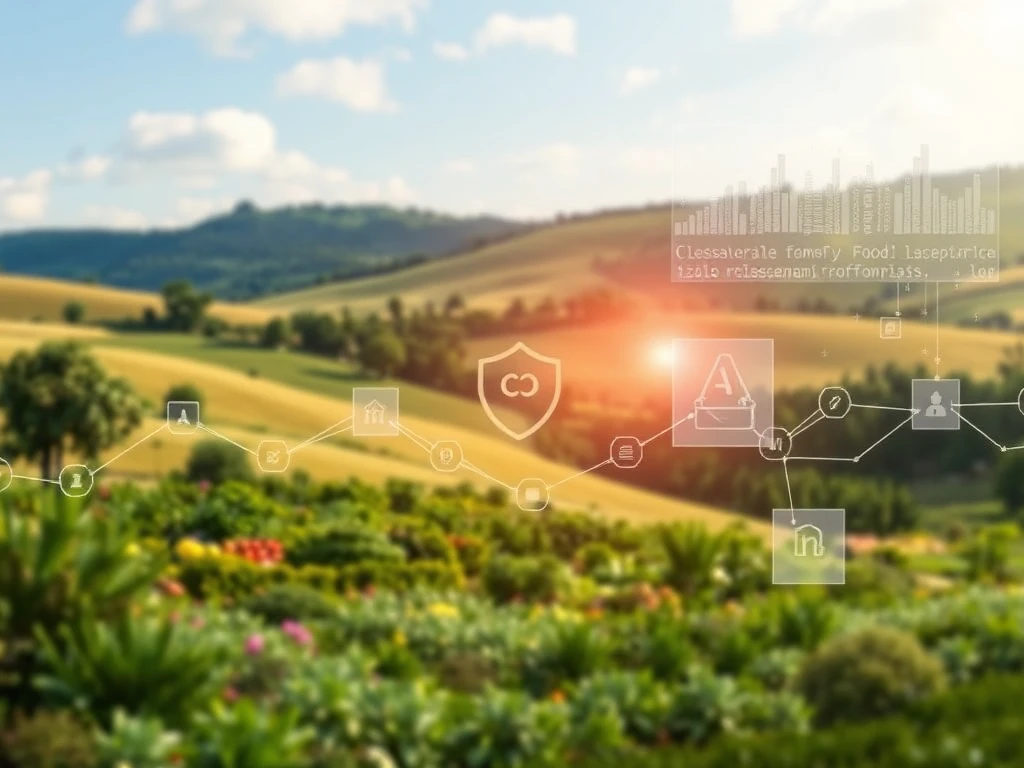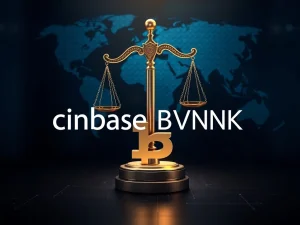Shocking Food Fraud Costs Billions: Can Blockchain Provide a Solution?

The world of cryptocurrency is often associated with digital assets and finance, but its underlying technology, blockchain, holds immense potential for real-world problems. One such critical issue is food fraud. This crime costs the global industry billions and poses serious health risks. Can blockchain technology, with its promise of transparency and security, be the answer?
The High Cost of Food Fraud
Food fraud is a significant problem, siphoning up to $50 billion from the global food industry each year. David Carvalho, CEO of Naoris Protocol, highlights its scale: “Most people would be surprised to hear that food fraud is an issue, but it’s a major one, costing the global food industry between $30 billion and $50 billion every year.” While a small percentage of the sector’s $12 trillion value, this amount equals the GDP of a small country.
The Food and Agriculture Organization of the United Nations (FAO) defines food fraud as intentionally deceiving consumers about food quality or content for economic gain. This includes mislabeling, theft, counterfeiting, and dilution. Real-world cases include melamine in milk, horsemeat sold as beef, and diluted olive oil. The economic damage extends beyond direct losses to include reputational harm, legal costs, and lost consumer trust. The human cost can be devastating, as seen in the 2008 melamine scandal that harmed over 300,000 infants. Temujin Louie, CEO of Wanchain, notes how fraud incidents erode consumer trust, impacting sales for legitimate businesses and weakening the industry’s foundation.
Cracks in the Supply Chain
The complexity and lack of visibility in global supply chains create opportunities for food fraud. The cold chain is particularly vulnerable to failures that can lead to spoilage and misrepresentation of goods. Fraud affects many products, including dairy, spices, seafood, organic items, honey, and fruit juices. Fragmented data systems are a major weakness. Carvalho points out that many companies use internal systems that don’t connect with suppliers or customers, creating ‘information islands.’ Without shared, reliable data, fraudulent products can enter and move through the system undetected, hindering effective traceability.
Blockchain Bites Back Against Food Fraud
Blockchain technology offers a potential solution to this growing crisis. While early attempts in blockchain adoption for supply chains faced challenges, the core principles of blockchain can build a more transparent and trustworthy system. Decentralization removes single points of control, and immutability ensures recorded data cannot be altered. Selective transparency allows relevant information sharing with authorized parties, while smart contracts can automate processes. Cryptography secures the ledger. Integrating IoT sensors provides an immutable audit trail of conditions, vital for cold chain integrity and food safety.
Examples of real-world implementation show promise. Walmart uses Hyperledger Fabric to trace pork and mangos, reducing trace times from days to seconds. Companies like TE-Food and Provenance offer blockchain-based traceability solutions. Major food corporations are exploring blockchain to improve supply chain transparency. Louie emphasizes the shift: “Traditional food supply chains have operated on a model of trusting intermediaries… Blockchain, in contrast, moves toward a system based on verifiable data.” Carvalho adds that increased visibility and auditability act as a powerful deterrent to fraudulent activities.
Challenges Remain for Blockchain Traceability
Despite its promise, blockchain is not a perfect solution. Scalability, cost, interoperability with existing systems, and integration pose significant barriers. The ‘garbage in, garbage out’ problem persists; blockchain ensures data integrity *onchain* but cannot verify accuracy *entering* the chain. Oracles and IoT devices feeding data are vulnerable to tampering or failure. Manual data entry is also susceptible to error or manipulation. A perfect onchain record doesn’t prevent false data input at the source.
Privacy concerns, regulatory uncertainty, and gaining stakeholder adoption are additional hurdles. Businesses are hesitant to expose sensitive supply chain data. Permissioned blockchains and selective transparency can help but require careful governance. Regulatory frameworks are still developing. Broad participation is crucial for success. Louie advises a pragmatic approach: “Start with clearly defined use cases… Robust governance models… are critical.” Carvalho stresses the need for industry-wide standards, training, and collaboration: “Technology alone is insufficient. Success hinges on redesigning underlying business processes, investing in training and change management, and fostering a culture of collaboration and data sharing.”
A Synthesized Future for Food Integrity
Combining blockchain with IoT, AI, and other innovations offers a promising path. IoT sensors provide real-time product journey data. AI analyzes data to detect anomalies. Rapid testing, smart packaging, and digital certificates further enhance food integrity. The infrastructure built to fight food fraud also improves operational efficiency, reduces waste, and substantiates sustainability claims. These benefits make blockchain and complementary technologies attractive even for companies less directly affected by fraud. Pilot projects and industry consortia are emerging, building towards standards. The potential benefits extend beyond reducing fraud to improving food safety, enhancing consumer confidence, and building a more sustainable global food system. The pervasive problem of food fraud is not insurmountable. Thoughtfully deployed and integrated, blockchain could provide the trust layer needed to address this $50-billion issue.







